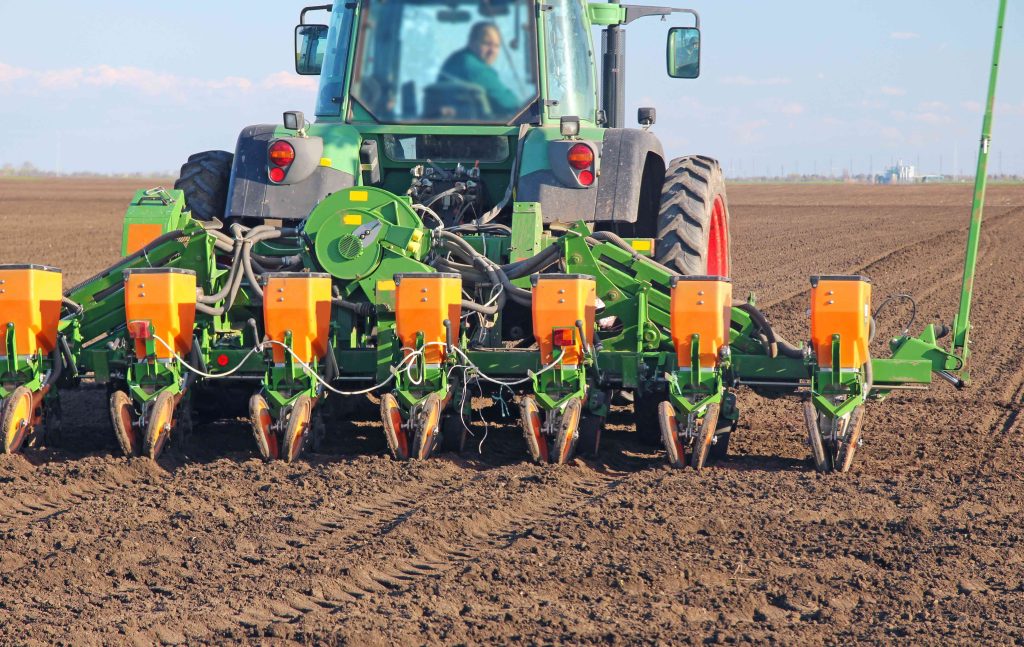Let’s talk Farm Safety. Agriculture, at its core, is not just a vital industry for food production but also one that comes with its unique set of risks and challenges, especially during the labor-intensive spring planting season. As the preparations begin on the farm for planting begin, it becomes crucial to emphasize safety and effective risk management practices. Prioritizing these aspects not only ensures the well-being of those involved but also safeguards the economic stability of agricultural operations.
Through this farm safety guide, we aim to highlight key strategies and practices that will help mitigate risks, promote safety, and ensure a productive planting season.
PREPARING FOR SPRING PLANTING
Preparation is the first step towards a successful and safe planting season. It involves a thorough assessment and planning phase that sets the foundation for the activities to come. The cornerstone of this farm safety preparation is ensuring the safety and readiness of farming equipment. Prior to use, all machinery should undergo detailed inspections to identify and repair any potential issues that could lead to malfunctions or accidents. This includes checking the functionality of safety guards, ensuring that all moving parts are lubricated and operational, and verifying that the equipment is in overall good condition.
Equally important is the use of appropriate safety gear. Farmers and agricultural workers should be equipped with protective clothing, gloves, eyewear, and hearing protection, especially when operating machinery. These precautions significantly reduce the risk of injuries and exposure to harmful substances.
ACTION ITEMS
EQUIPMENT SAFETY INSPECTION
- Conduct thorough pre-use inspections of all planting equipment and machinery.
- Schedule any necessary maintenance or repairs before the start of the planting season.
- Verify that all safety guards are in place and functional.
SAFETY GEAR AND PERSONAL PROTECTION
- Ensure that all workers have access to and use appropriate safety gear, including gloves, goggles, hearing protection, and protective clothing.
- Provide training on the correct use of personal protective equipment (PPE), especially when handling chemicals and pesticides.
RISK MANAGEMENT STRATEGIES
Understanding and managing the risks associated with spring planting is crucial for minimizing potential losses and ensuring the safety of everyone involved. The first step in risk management is the identification of risks. Common risks during the planting season include equipment-related accidents, exposure to chemicals, and environmental hazards such as extreme weather conditions.
Once risks are identified, risk mitigation plans can be developed. These plans may include implementing regular training sessions for workers on equipment use and safety protocols, establishing emergency response procedures, and setting up regular maintenance schedules for all machinery.
Emergency preparedness is another critical component of risk management. This involves having a well-defined action plan in case of accidents or sudden adverse weather events. Ensuring that all workers are familiar with these plans and that emergency supplies, such as first aid kits and fire extinguishers, are readily available can make a significant difference in response times and outcomes.
ACTION ITEMS
RISK ASSESSMENT AND MITIGATION PLANNING
- Identify potential risks specific to your operations, including those related to equipment, chemicals, and environmental conditions.
- Develop and communicate risk mitigation plans, including safety protocols, emergency response procedures, and worker training programs.
EMERGENCY PREPAREDNESS
- Review and update emergency response plans, ensuring all workers know the procedures and locations of emergency equipment like first aid kits and fire extinguishers.
- Establish clear communication channels and protocols for reporting accidents or hazardous conditions immediately.
HEALTH AND SAFETY BEST PRACTICES
Ensuring the personal safety of workers is paramount. This not only involves the proper use of machinery and equipment but also the management of health risks associated with exposure to the sun, heat, and chemicals. Workers should be trained on how to safely handle and apply chemicals and pesticides, including the use of personal protective equipment (PPE) to prevent exposure.
Given the physical demands of agricultural work, especially during the peak of spring planting, attention must also be paid to heat stress and hydration. Providing access to drinking water, snacks, breaks, and educating workers on the signs of exhaustion or extreme stress are all vital strategies for maintaining health and safety on the farm.
ACTION ITEMS
HEALTH AND SAFETY TRAINING
- Organize regular training sessions on equipment safety, emergency response, and best practices for health, such as dealing with heat stress and proper hydration.
- Ensure all workers are aware of the signs of heat-related illnesses and the importance of taking regular breaks and staying hydrated.
CONCLUSION
We are excited for Spring and a productive spring planting season, and it’s crucial that we place a strong emphasis on safety and risk management. By preparing properly, identifying and mitigating risks, and adhering to health and safety best practices, agricultural operations can not only protect their workers but also enhance their efficiency and productivity. Please take a few minutes to focus on safety and let’s ensure that everyone ends the work day the same way they started it. Together, we can ensure a safe and prosperous season for the agricultural community.
For inquiries or additional support, please contact us. We’re here to assist you.

